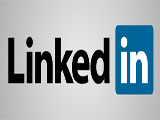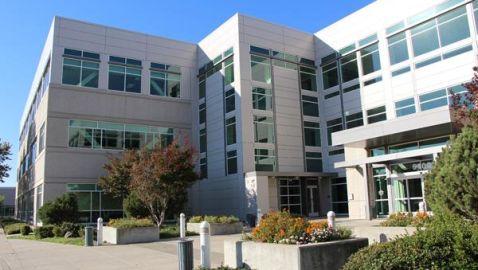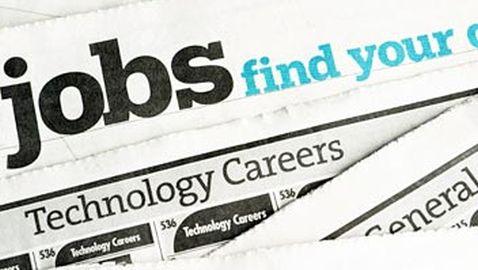LinkedIn Turns User Resume’s Into Revenue Generating Tool And No Why No One Is Complaining?
Post Views 1
But did you know that as much as it serves job seekers, it serves hiring managers to and charges good money from them for the right to access your profiles. Furthermore, that is irrespective of whether you are on the job market or not.
Under the headship of Jeff Weiner, who took over in December 2008, LinkedIn has redefined itself and gone for a noteworthy makeover by launching LinkedIn Recruiter, an exceptional service that permits businesses to view and search through every single profile on the network, albeit by paying for it.
LinkedIn spokesman Richard George said that the use of LinkedIn Recruiter was widespread and that it had spread its popularity way beyond the technology sector, to which it was largely confined earlier. He confirmed that the 82 of the companies listed in Fortune 100 use the company’s database for their hiring needs.
Its immense acceptance and usefulness extend beyond national boundaries and more than 10,000 companies globally use services and products of LinkedIn, labeled Hiring Solutions. George said, “Hiring Solutions is now our largest and fastest growing business line, which I think kind of illustrates the market demand for what we can offer companies,” George said.
The worth and value that the company brings to the hiring process and the savings in terms of finances to the companies using the services can be gauged from the experience of Aaron Aders, CEO of search engine optimization consulting company Slingshot SEO. His company has 100-employees and all his recent hires have been through LinkedIn and not through using the services of a recruiter. Eliminating the recruiter also meant that the company saved on the expensive recruiter fees. His per-employee hiring expenses reduced drastically from $7000 to less than $1000. On the use of LinkedIn he said, “It’s absolutely necessary.”
It is a win-win situation for both, LinkedIn and for the companies that use it services. Whilst it is a significant value offer for businesses and has eased and widened their hiring boundaries, not to speak of the cut in hiring expenses, it has proved to be a revenue-generating bonanza for LinkedIn.
Companies desirous of logging in to its Recruiter program have to cough up as much as $8000 per log-in. Big companies have dozens of accounts with LinkedIn, swelling their kitty considerably. In the quarter January to March, 2012, Hiring Solutions earned $103 million for LinkedIn, Premium subscriptions, which regular users can identify with more easily, could manage a little more than one-third percent of the amount and earned the company $38 million for the same period.
Ironically, Facebook and other social networks, who also command huge user databases, are bound by user privacy mandates and have had to face legal ire for disclosing user identities. On the other hand LinkedIn has a user base that is keen that its information is brought to the notice of potential employers and hiring agencies. LinkedIn’s current membership is around 161 million and as it increases so does the company’s revenue.
David Marr, a recruiter, with nine years of experience in this field says that he has, during this period, worked with many Fortune 500 companies and says that he is witness to the dramatic change the industry has undergone in almost a decade. He says that from depending heavily on job boards and direct contacts, the hiring process has shifted almost entirely to social networking sites, especially LinkedIn, whose services he largely uses today.
“It definitely makes it easier to communicate with people,” he said. “It allows the communication channels to flow broader. It’s viral.”
Both recruiters and companies, using the services says that the biggest advantage of using LinkedIn is that it gives them access to those candidates who are actively seeking jobs but also to those who have the qualifications, but are not out in the market searching for a job. “We call it having a deep bench,” he said.
Aders said that there are many prized experienced workers who are working, but are envisioning a change of career for a variety of reasons. LinkedIn helps us keep in touch with people who have recently left their jobs or are seeking a transition. “The most valuable employee is typically one that already has a job.”
Marr said LinkedIn has changed the very nature of the job search. Moreover those who are employed and looking for a transition are much more receptive to a LinkedIn connection than merely a phone call. There is a sense of connect, a feeling of worth and intensifying of their esteem. “When I’m identifying the talent, I’m networking with them. It doesn’t necessarily mean they’re interested in the role, but I’m having conversations and engaging in dialogue about what their interest might be for future opportunities.”
LinkedIn foresee a potential employee in every employee. Today’s volatile job market also see’s workers jumping from one job to the other and opting for more lucrative and satisfying jobs whenever the openings arise or the opportunities present themselves. “The days of working for a company for your entire career, for 50 years, isn’t realistic anymore. While it still exists, the average life cycle is 18 months in a position. If you’re not growing, you’re going to be looking for the next place where you’re going to grow,” explains Marr.
Of course, given that in June 6 million passwords were stolen, owing to passwords that were not strongly encrypted, LinkedIn must take moral responsibility to protect its users’ virtual identities by inculcating stringent and full-proof measures to prevent such occurrences.
However, users will keep coming in hordes and LinkedIn will reap a rich harvest in terms of revenue and gain further in prominence and standing. As Marr says, “If you’re not on LinkedIn and you’re not using LinkedIn as an avenue to connect and follow and really be informed, you’re really doing yourself a disservice.”
During a recent discussion, LinkedIn’s chief executive, Jeff Weiner, rose from his chair, walked over to a whiteboard and drew a diagram that other social sites would have loved to call their own. Weiner drew three lines, all emerging from the same center. The circular lines indicated how LinkedIn made its money. The outer circle was one for its subscriptions, followed by marketing and advertising and in the center, its crown jewel; the company’s data base of 161 million member profiles that it has turned into a cash cow, a list without which no recruiter can run his business and is more than willing to pay for it.
“That’s the bull’s-eye,” he says.



 How Do You Win At Home-Based Business? Hit The Floor Running
How Do You Win At Home-Based Business? Hit The Floor Running  Breaking Business Plans Down to Smaller Steps
Breaking Business Plans Down to Smaller Steps